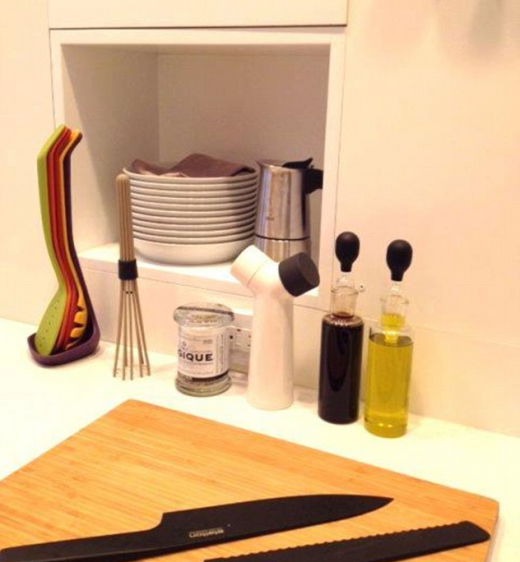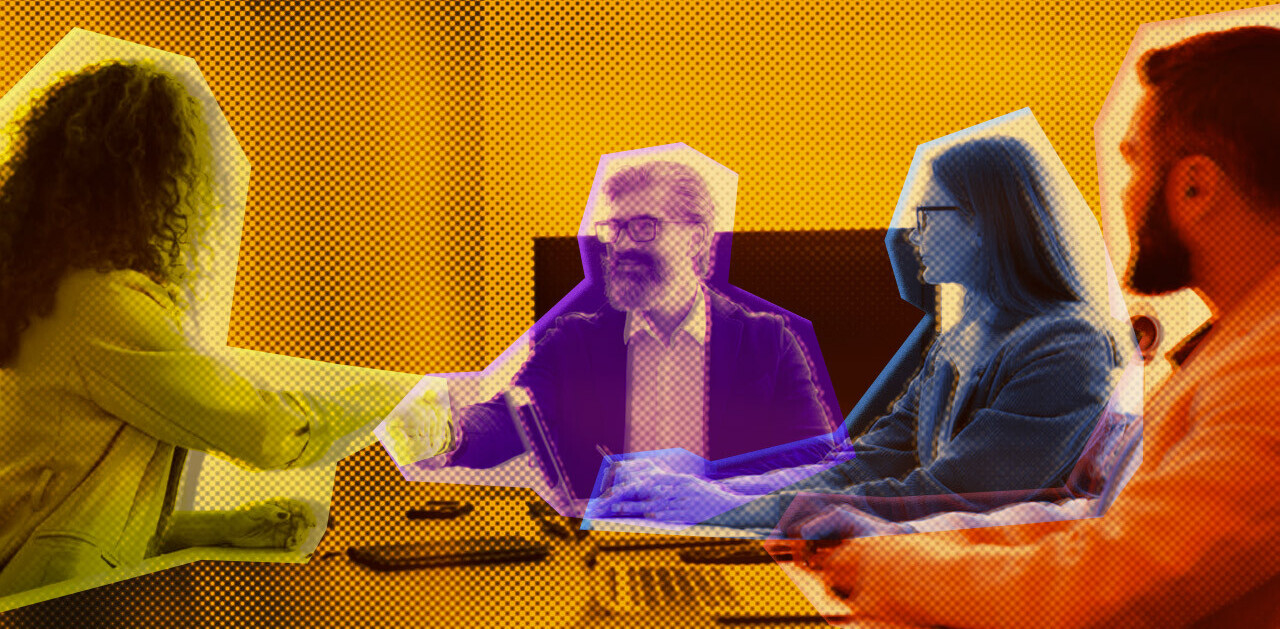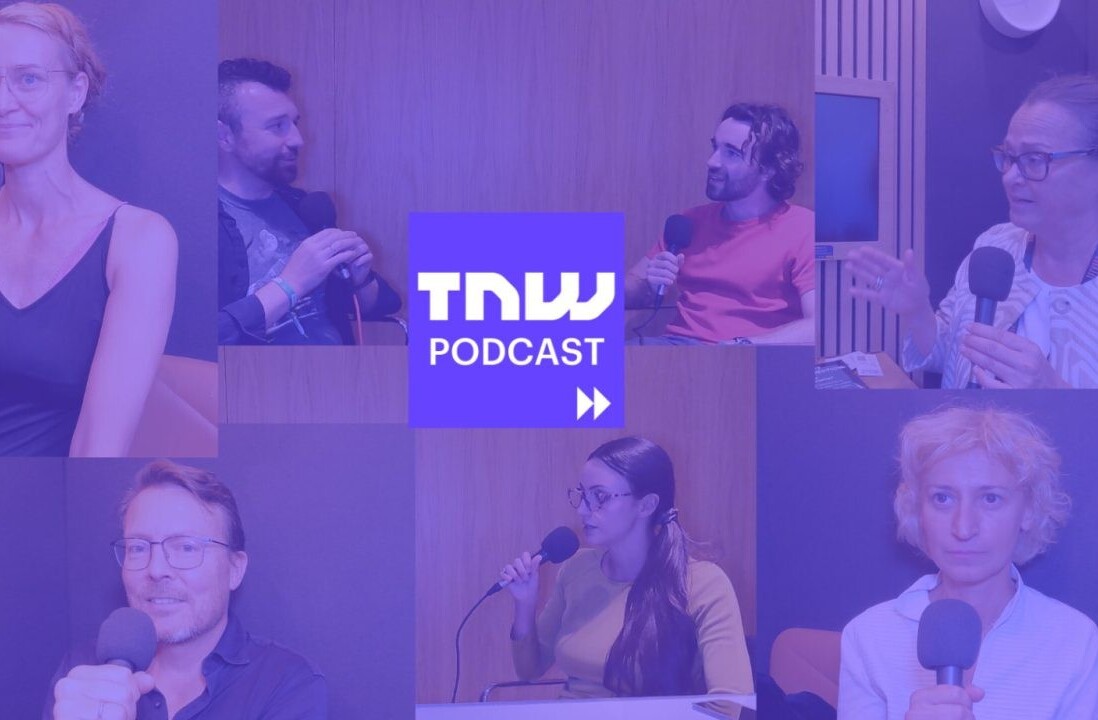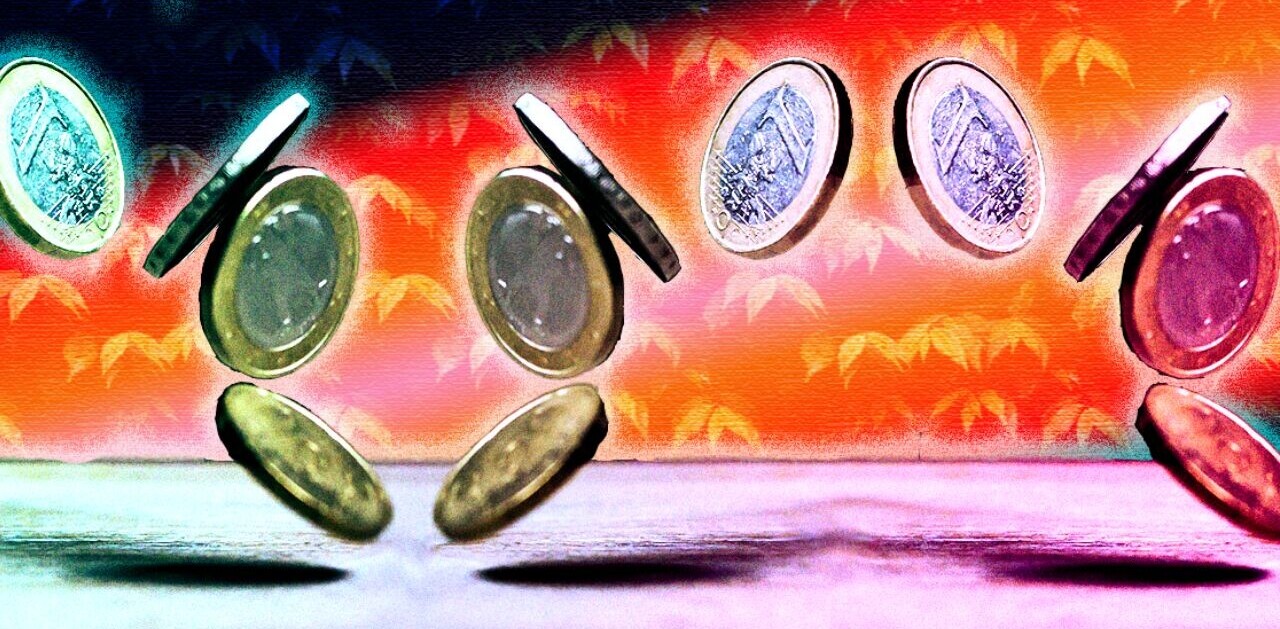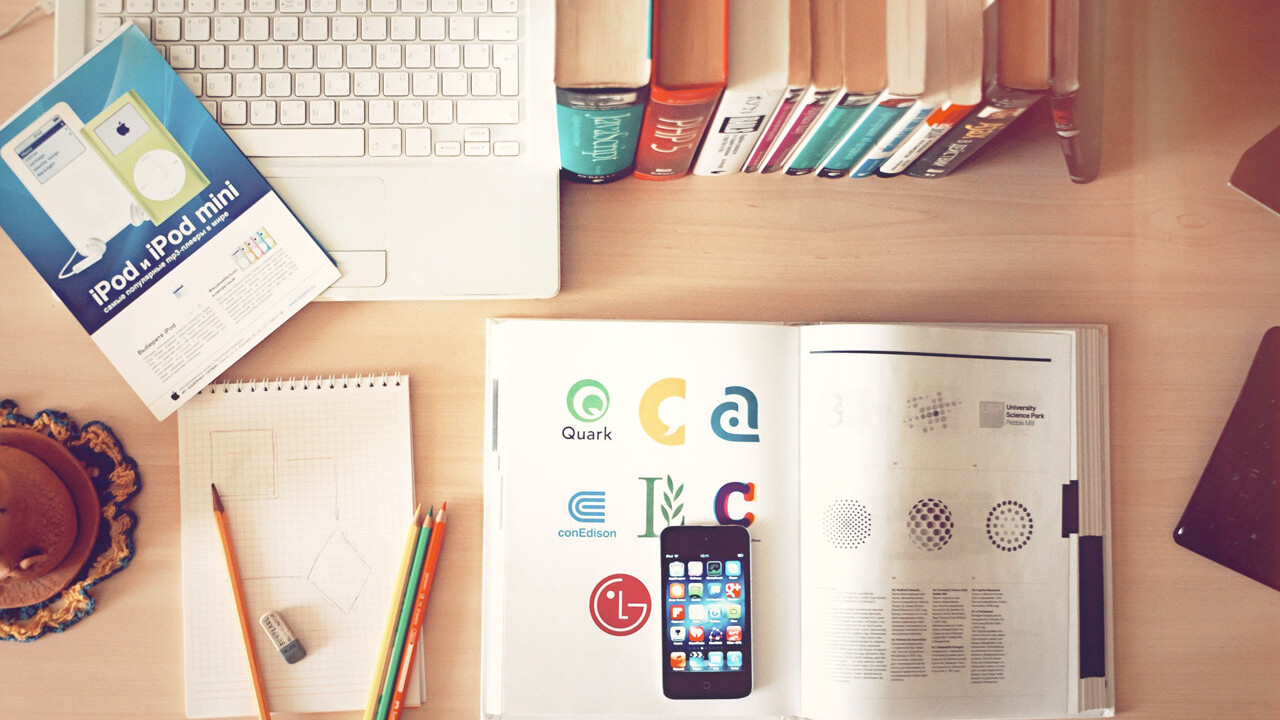
Mikael Cho is the co-founder of ooomf, a creative marketplace connecting mobile and Web projects with vetted, handpicked developers and designers from around the world. This post originally appeared on the ooomf blog.
Cleaning out your closet, emptying your inbox, putting things where they “belong.”
A few years ago, I worked at a Web design agency as a product manager.
The part of the job I loved the most was working on product with our design team and clients. Unfortunately, this only made up about 10 percent of the work that I actually got to do.
The majority of the time, I was trying to control the constant flow of stuff – keeping track of meeting notes, searching for files, and trying to stay up-to-date with the latest technology news.
I was mentally exhausted. I’d get home feeling that I hadn’t really accomplished anything.
Once I left the agency and started ooomf, I wanted to fix how I approached consumption in my life.
Over the last few years, I’ve discovered ways to reduce the noise of stuff around me so I can focus on creation and have more time for the things that matter most.
The last year has been the most productive of my life and I owe a lot of it to understanding the importance of decreasing how much I consume and coming up with ways to cut clutter.
How clutter happens
You collect things for a number of reasons – maybe you think you’ll need to use it later, it has sentimental value, or you spent good money on it so you feel you need to keep the item, even if you haven’t touched or used it in weeks, months, or years.
You might be holding on to that book you bought a year ago that you swear you’ll read or those killer pair of shoes that you’ll bring out for just the right occasion.
But the reality is, you probably made a mistake in buying those things and it literally hurts your brain to come to terms with that fact.
Researchers at Yale recently identified that two areas in your brain associated with pain, the anterior cingulate cortex and insula, light up in response to letting go of items you own and feel a connection towards:
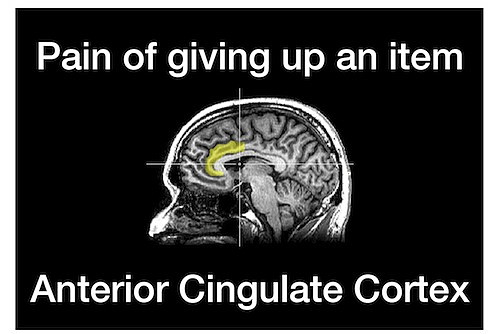
This is the same area of the brain that lights up when you feel physical pain from a paper cut or drinking coffee that’s too hot. Your brain views the loss of one of your valued possessions as the same as something that causes you physical pain.
The more you’ve commited emotionally or financially to an item, the more you want to keep it around.
Why Apple wants you to touch its stuff
When it comes to physical things, merely touching an item can cause you to become more emotionally attached to it.
In this study, researchers gave participants coffee mugs to touch and examine prior to participating in an auction.
The researchers varied the amount of time the participants were able to handle the mugs to see if this would have an effect on the amount of money participants would be willing to spend on the mugs during the auction.
The results of the study showed that participants who held the mugs longer, were willing to pay over 60 percent more for the mugs than participants who hed the mugs for shorter periods.
The study concluded, the longer you touch an object, the greater the value you assign to it.
Apple is familiar with the effect of touch on your psychology and has brilliantly designed its retail stores to help you build an emotional attachment to their products.
Here’s a shot of an Apple Store:
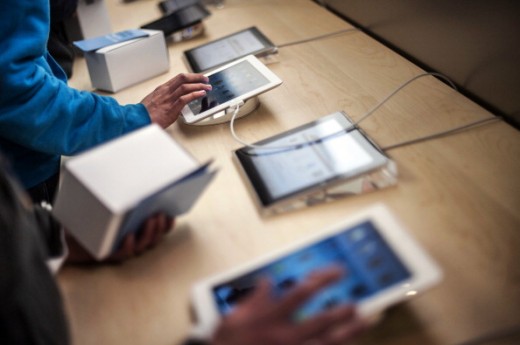
Author Carmine Gallo is writing a book about the ins and outs of the Apple Store. Gallo explains that everything in the Apple Store is designed for you to touch and play with, to make you feel like it’s your own. Gallo states:
The main reason notebook computers screens are slightly angled is to encourage customers to adjust the screen to their ideal viewing angle…The ownership experience is more important than a sale.
When you introduce new items into your life, you immedietely associate value with these items,making it harder for you to give them up in the future.
This psychological connection to things is what leads to the accumulation of stuff.
Clutter’s impact on your brain
Whether it be your closet or office desk, excess things in your surroundings can have a negative impact on your ability to focus and process information.
That’s exactly what neuroscientists at Princeton University found when they looked at people’s task performance in an organized versus disorganized environment.
The results of the study showed that physical clutter in your surroundings competes for your attention, resulting in decreased performance and increased stress.
A team of UCLA researchers recently observed 32 Los Angeles families and found that all of the mothers’ stress hormones spiked during the time they spent dealing with their belongings.
Similar to what multitasking does to your brain, physical clutter overloads your senses, making you feel stressed, and impairs your ability to think creatively.
Clutter isn’t just physical
Files on your computer, notifications from your Twitter and Facebook accounts, and anything that goes “ping” in the night competes for your attention.
This creates a digital form of clutter that erodes your ability to focus and perform creative tasks.
Mark Hurst, author of Bit Literacy, a New York Times best seller on controlling the flow of information in the digital age, put it best when he said:
Bits are a new material.
When you have to-do items constantly floating around in your head or you hear a ping or vibrate every few minutes from your phone, your brain doesn’t get a chance to fully enter creative flow or process experiences.
When your brain has too much on its plate, it splits its power up. The result? You become awful at:
- filtering information
- switching quickly between tasks
- keeping a strong working memory
The overconsumption of digital stuff has the same effect on your brain as physical clutter.
Finding your perfect storm
I like to keep things neat but when I used to clean my room to perfection, my mom would still see that same room as a disaster.
Everyone’s tolerance for clutter is different.
Researchers have even found that certain people need a bit of a mess in their surroundings to feel inspired and get work done, stating that:
A clean desk can be seen as a dormant area, an indication that no thought or work is being undertaken.
For instance, if you look at this photo of the home office of Steve Jobs, it’s not exactly the picture you’d expect of a zen-like visionary obsessed with less:
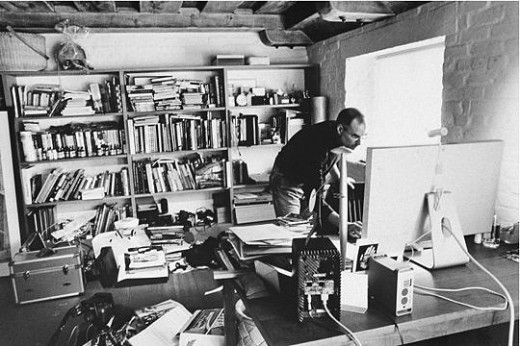
On the other hand, there’s TreeHugger founder Graham Hill, who traded in his million dollar mansion for a 420 square foot apartment that only has the bare essentials.
His kitchen consists of 12 salad bowls and utensils:
In an interview with the New York Times, Hill stated:
I like material things as much as anyone. I studied product design in school. I’m into gadgets, clothing and all kinds of things. But my experiences show that after a certain point, material objects have a tendency to crowd out the emotional needs they are meant to support.
While clutter has been shown to negatively effect your performance, it is your perception of clutter that matters, not someone else’s.
If having a notebook, pen, or a photo of your significant other on your desk, doesn’t feel like clutter to you, then it’s not.
You should seek to create spaces that make you feel at ease.
Editing the noise: 4 ways to master clutter
There are millions of sources of information and things for you to consume so it’s important to figure out a way to control these streams so you have more time to do things that matter.
Here’s four things that have been working for me:
1. Apply constraints
One of the principals of good design is constraints. You can apply this same theory to create a system for mastering consumption.
For instance, set a limit for how many people you follow on Twitter, how many books you buy, or how many apps you own.
I set a limit of 200 people I follow on Twitter and I don’t buy any books until I’ve finished the current book I’m reading. I also don’t purchase or download any apps until I need them.
There will always be more information available than you can consume so set limits so you’re no longer simply trying to just get through it all but rather enjoying more of what you consume.
2. Use small storage spaces
Cutting down on your storage space can do wonders for limiting consumption. Try cutting your closet down to 10 hangers or force yourself to use a small bag when you travel.
Do you really need a walk-in closet or a rack for all your shoes? Try constraining your storage spaces and you’ll quickly identify what you really need.
3. Conduct a monthly review of your closet
Every month, review your closet looking for items you haven’t worn. If it’s summer and you have t-shirts, shorts, or shoes that you aren’t using, put them in a bag to sell on eBay or Craigslist or give them away.
Another option is to try and get rid of one item a week until you’ve cut your belongings down to the things you actually use.
4. Remove all files from your desktop daily
If you work on a computer, having a cluttered desktop every time you turn on your computer can give you a constant uneasy feeling.
At the end of each day, remove every file from your desktop. If you don’t have an immediate place to move the file, create one folder on your desktop and drop the stray files in there.
Here’s a screenshot of my desktop screen with one “Home” folder:

Clutter, whether physical or digital, is something you’ll always have to deal with but it can be controlled.
Finding ways to stear the streams of consumption in your favor will give you a sense of power and a freed mind, leaving room for you to create and experience life without constantly filling your cup to the top with someone else’s sugar.
Get the TNW newsletter
Get the most important tech news in your inbox each week.

